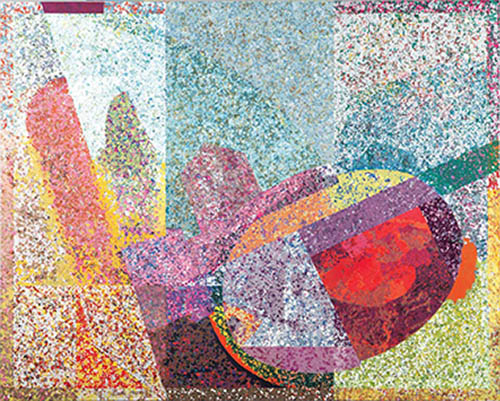Sam Gilliam (1933-2022)

Museum Moment
pencil signed
screen print
1987
edition 103/105
32 x 40 inches, unframed
SOLD
“One of the most highly praised African-American artists in the world” lived in Louisville for 20 years. He was born in Tupelo, Mississippi, and his family moved to Louisville in 1942. From the time he was in elementary school, Gilliam wanted to be an artist. He graduated from Central High School in 1951 and the University of Louisville in 1955. After a stint in the Army, he returned to U of L and took his master of art degree in 1961. He taught elementary and junior high school while working on his master’s degree.
Gilliam praised his U of L professors, especially Mary Spencer Nay, Ulfert Wilke and Eugene Leake, for helping “us to be good students, artists and people.” In the same Archives of American Art oral history, Gilliam also had kind words for Justus Bier, head of the art department, who worked to find employment for the graduates so they could continue their art.
Gilliam worked alongside such African-American artists in Louisville as Bob Thompson, Robert Douglas and G. Caliman Coxe, and he helped start Gallery Enterprises, a gathering place for artists, writers and musicians, in 1958. Four years later, Gilliam was gone, moving to Washington, D.C., which was a center for Color-Field painting and where he developed his trademark technique of suspending and draping large color-stained canvases.
Gilliam’s work is in museums around the world including the Metropolitan Museum of Art, the Museum of Modern Art, the National Gallery of Art, the Studio Museum in Harlem, the Los Angeles County Museum of Art, the Art Institute of Chicago, the Tate Modern and the Musee d'Art Moderne de la Ville de Paris. He has had many exhibitions, awards and commissions, including one for the National Museum of African American History and Culture.
The University of Iowa Stanley Museum of Art, which supplied the assessment in the first paragraph, sees Gilliam’s as contributing “a great deal to contemporary art through his revolutionary work with raw and manipulated canvas (both unframed and shaped), in his application of the properties of newly developed artist-quality acrylic paints, and in his magnificent color field painting. Gilliam was one of the first generation of Washington-based painters who explored the relationships between colors on large expanses of canvas.”
Biography from Louisville Modern: an era in art, available here and on Amazon.